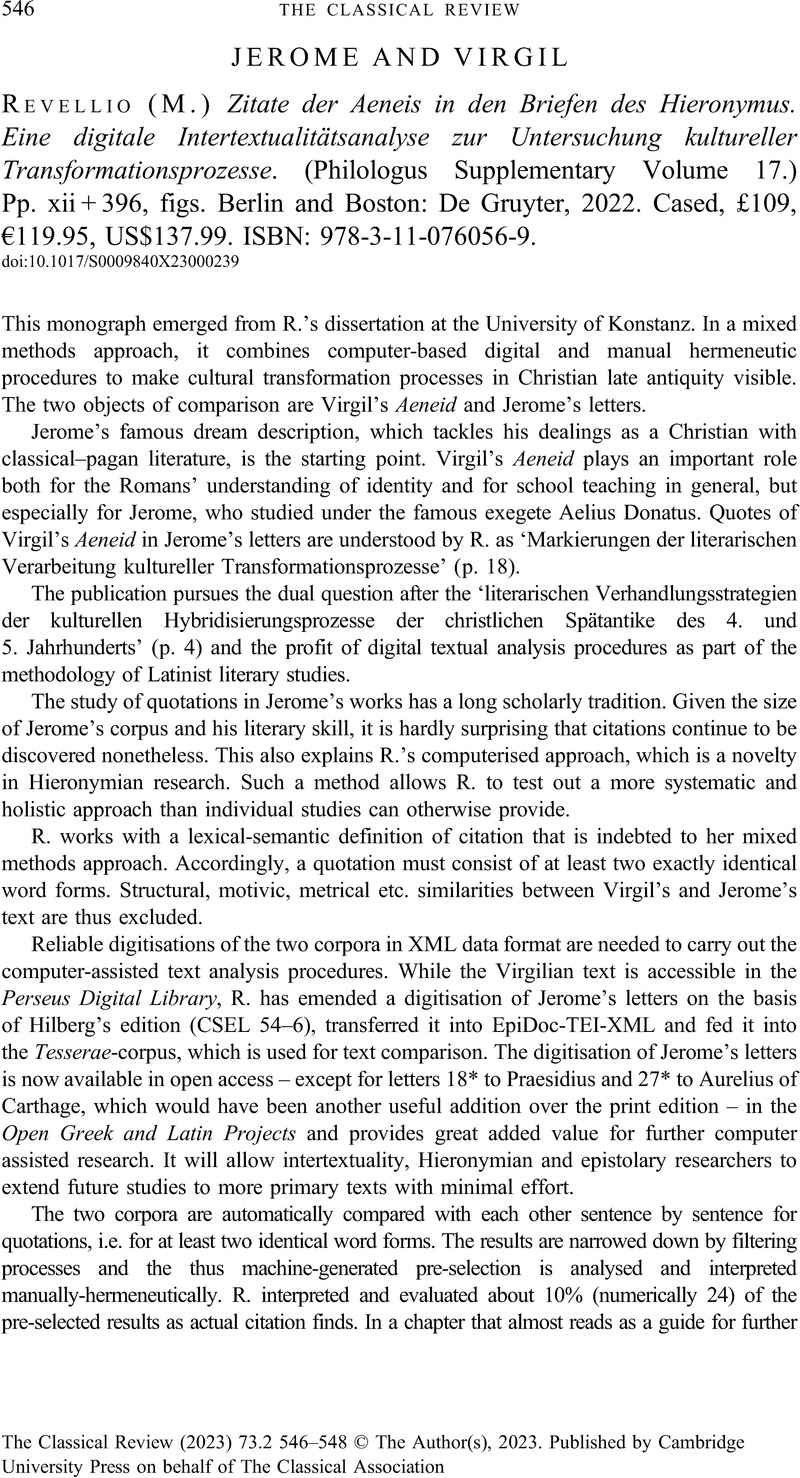No CrossRef data available.
Article contents
JEROME AND VIRGIL - (M.) Revellio Zitate der Aeneis in den Briefen des Hieronymus. Eine digitale Intertextualitätsanalyse zur Untersuchung kultureller Transformationsprozesse. (Philologus Supplementary Volume 17.) Pp. xii + 396, figs. Berlin and Boston: De Gruyter, 2022. Cased, £109, €119.95, US$137.99. ISBN: 978-3-11-076056-9.
Review products
(M.) Revellio Zitate der Aeneis in den Briefen des Hieronymus. Eine digitale Intertextualitätsanalyse zur Untersuchung kultureller Transformationsprozesse. (Philologus Supplementary Volume 17.) Pp. xii + 396, figs. Berlin and Boston: De Gruyter, 2022. Cased, £109, €119.95, US$137.99. ISBN: 978-3-11-076056-9.
Published online by Cambridge University Press: 30 March 2023
Abstract
An abstract is not available for this content so a preview has been provided. Please use the Get access link above for information on how to access this content.

- Type
- Reviews
- Information
- Copyright
- Copyright © The Author(s), 2023. Published by Cambridge University Press on behalf of The Classical Association



